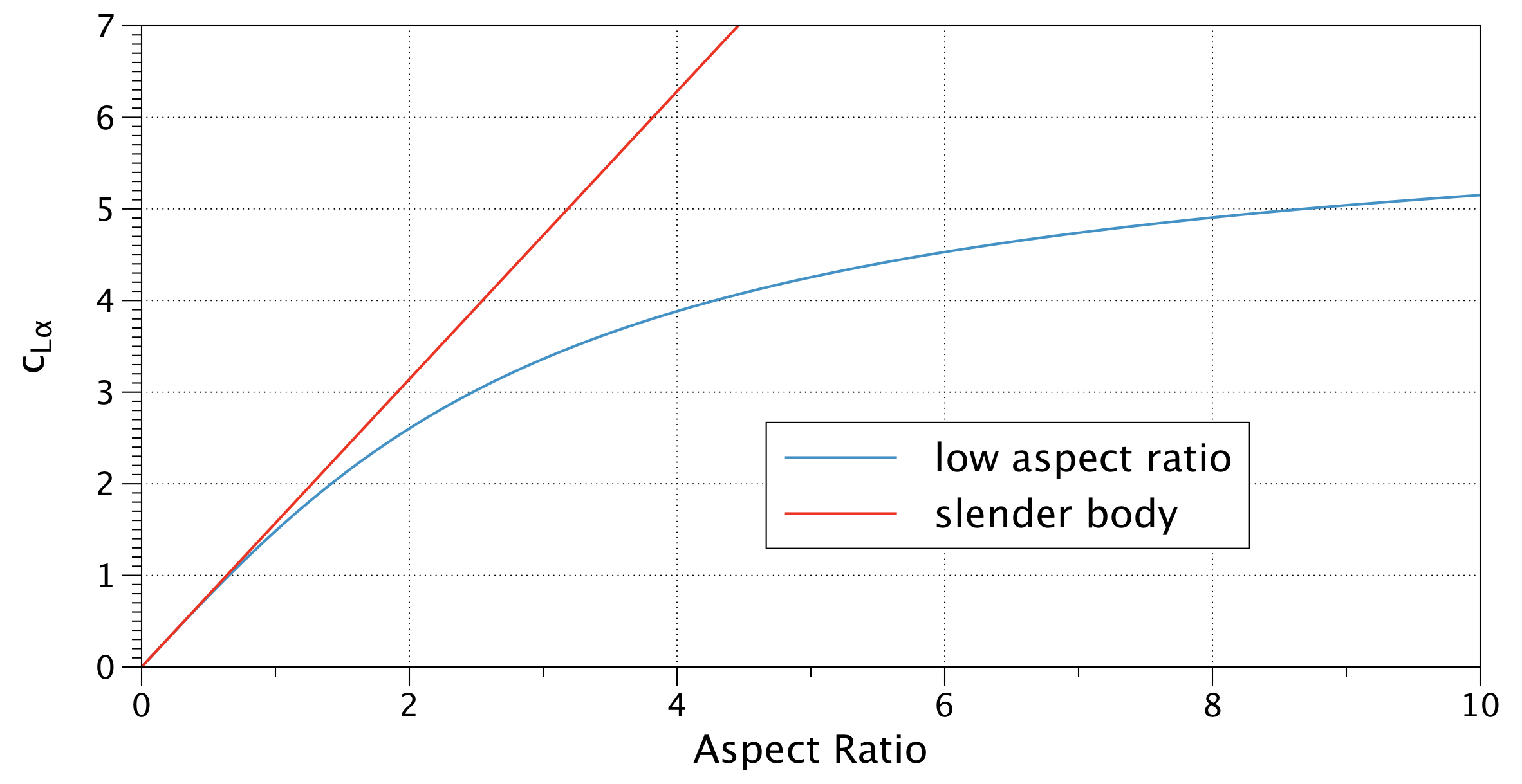There are indeed several approximations, depending on the shape of the wing. Generally, the lift curve slope is $2\pi$ only for a flat plate in inviscid 2D flow (with Kutta condition fulfilled). With thicker airfoils, the lift curve slope in 2D increases slightly. It also increases with Mach number proportional to the Prandtl-Glauert factor $\frac{1}{\sqrt{1-Ma^2}}$ and the Reynolds number.
Now to 3D flow: Once you move away from infinite aspect ratios, the lift curve slope drops. With very small aspect ratios $AR$ the lift curve slope becomes $c_{L\alpha} = \frac{\pi \cdot AR}{2}$. See the plot below for the ideal lift curve slope of an unswept wing:

Please note that the red line is only valid for AR = 0! Then the lift curve slope increases up to $c_{L\alpha} = 2\cdot\pi$ for $AR = \infty$ (and zero airfoil thickness and no friction effect), as shown by the blue line. If you know your airfoil lift curve slope, modify the result from the plot above by the ratio between the airfoil lift curve slope and $2\pi$. Now your lift coefficient will become:
$$c_L = c_{L\alpha_{3D}}\frac{c_{L\alpha_{2D}}}{2\pi}\cdot\alpha$$
with your angle of attack $\alpha$ in radians.
For an analytic approach you may use the formulas below, but stay away from the region close to Mach 1. If those (rather precise) approximations look too daunting, feel free to simplify them:

Nomenclature:
$c_{L\alpha} \:\:$ lift coefficient gradient over angle of attack
$c_{L\alpha\:inc}$ lift coefficient gradient over angle of attack in incompressible flow
$\pi \:\:\:\:\:$ 3.14159$\dots$
$AR \:\:$ aspect ratio of the wing
$\nu \:\:\:\:\:$ the wing's dihedral angle
$\varphi_m \:\:$ sweep angle of wing at mid chord
$\varphi_{LE} \:$ sweep angle of wing at leading edge
$\lambda \:\:\:\:\:$ taper ratio (ratio of tip chord to root chord)
$(\frac{x}{l})_{d\:max} \:$ chordwise position of maximum airfoil thickness
$Ma \:\:$ Mach number
Note that you do not need the planform efficiency (Oswald factor) $\epsilon$ for calculating lift curve slope. That only comes into play when you compute the [induced drag][4] of the wing.


